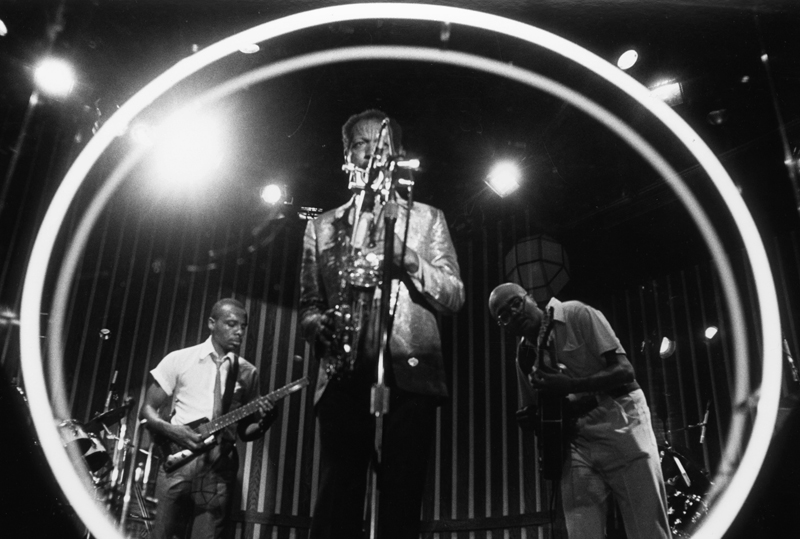
Ornette Coleman Documentary, Made in America, Honors a Jazz Pioneer
Above: Scene from Ornette: Made in America.
Twenty years ago, when I was a young musician with artistic ambitions, Ornette Coleman was the closest thing I had to a god. Miles Davis, John Coltrane and Eric Dolphy were the other faces on my teenage Mount Rushmore, but in my heart the Fort Worth-born Coleman was a step above and beyond those giants. Where they provided immense earthly pleasure, Coleman’s effect was metaphysical and mysterious. Something about his music seemed to push the limits of possibility. He made me believe in something I couldn’t quite put my finger on.
Coleman’s harmonic philosophies never interested me. It was only his music that mattered, and the freedom it celebrated.
Documentary filmmaker Shirley Clarke was a great lover of freedom. A child of the Great Depression, Clarke rebelled against convention throughout her life, studying dance with legendary avant-garde choreographer Martha Graham in the early 1940s then, 10 years later, as a mother in Eisenhower’s America, taking up filmmaking to become a force in the then-burgeoning world of American independent film. Her movies tackled controversial and creative topics, from drug abuse to poetry, from dance to life as a gay African-American cabaret singer, and she brought a daring visual aesthetic to her work. Looking back, it seems inevitable that she would find her way to Ornette Coleman, a fellow American avant-gardist (they met through mutual friend Yoko Ono) and freedom-seeker. In the late 1960s she started filming Coleman for what would eventually become 1984’s Ornette: Made in America, a restored version of which is being released for the first time on DVD on Nov. 11 by Milestone Films.
Made in America is actually two films blended into one. The first comes from footage Clarke shot of Coleman in the ’60s, when he was integrating his 10-year-old son, Denardo, into his band. The second is made up of interviews and performances from the early 1980s, when his hometown of Fort Worth feted Coleman by hosting him for a series of jazz and symphonic concerts.
The official trailer for Ornette: Made in America
It was a triumphant return for Coleman, who had left the city decades earlier after a childhood marked by poverty and racial discrimination.
The visual differences between the two elements are striking. In the ’60s Clarke was shooting on film, which meant beautiful footage but constricted and cumbersome shoots. By the ’80s, she was starting to experiment with the then-nascent medium of video. And though it’s easy to dislike the video portions of Made in America for their early-’80s MTV-style feel, shooting on video afforded Clarke an approximation of the freedom that Coleman had been enjoying for decades, and the ability to create a visual language to parallel the musical one that Coleman had developed. Video, Clarke said, “allows the filmmaker to stay in the creative process longer.”
Aesthetic reservations notwithstanding, video gave Clarke the opportunity to keep up with Coleman, her muse, whose music has always been about immediacy and spontaneous expression. Clarke enacted her own artistic decisions in the editing room, cutting the film to the sound of Coleman’s music. “The film looks like how Ornette sounds and has the same basic thinking,” she told the Los Angeles Times in 1986.
Made in America may look like how Ornette Coleman sounds, but its thinking, like Coleman’s, is anything but basic. One might call it incomprehensible. I’d be lying if I said I understand what Clarke is trying to communicate when she uses jump-cut visual collages, or juxtaposes footage of Coleman’s interviews and live performances with random shapes, neon lights, floating cut-outs and architectural forms. And while Coleman communicates with clarity and ease through his music, I can barely make heads or tails of his rambling theories about creativity, composition and sex. But then, it’s always been that way. Coleman’s harmonic philosophies never interested me. It was only his music that mattered, and the freedom it celebrated.
To support journalism like this, donate to the Texas Observer.


